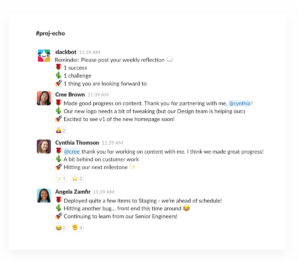Who you know can greatly influence your career development. For professionals at any stage, it has become crucial to master the art of networking in the office.
However, the importance of networking hasn’t made the activity itself any easier. Working to build positive relationships in the office can be quite intimidating. You need to step out of your comfort zone to interact with possible connections and then work to maintain those relationships.
But workplace networking doesn’t have to be a daunting task. In fact, it can be a rewarding and seamless experience if you rely on the right strategies.
In this article, we’ll look at five tips to streamline your workplace networking experience, helping you forge strong connections and make your professional journey more enjoyable. Let’s dive in!
1. Leverage social media
Most social media platforms have evolved beyond just being spaces for personal connections. In this age, they are also powerful social networking tools that can help foster long-term relationships in the workplace, enhancing the office experience for employees.
To leverage social media for hassle-free workplace networking initiatives, start by making social profiles on major platforms if you don’t have any. These include Twitter, Instagram, Facebook, and LinkedIn, which remains the preferred for professional networking with over 1 billion members globally.

If you already have social profiles, ensure your professional profiles are up-to-date and reflect your current role, skills, and accomplishments. A great profile makes it easier for colleagues to understand your professional background and interests.
To boost your workplace networking efforts, actively reach out to people you work with. Building connections outside the confines of the office environment can strengthen professional relationships.
You can use the direct messaging feature to initiate conversations with colleagues. Whether it’s to express appreciation for their work or to seek advice, direct messaging can be a valuable tool for building more personal connections. Most of the major platforms have the feature.
Regularly share updates about your professional achievements, projects, and milestones. This keeps your network informed about your contributions and positions you as an active and engaged professional. The latter shows your colleagues your value as a connection, making them more open to building a professional relationship with you.
In addition, stay active on social media. Share insightful articles, comment on posts, and contribute to conversations. This showcases your expertise while making you more visible to your colleagues.
2. Joining networking organizations and events
Take advantage of opportunities to expand your professional network by joining relevant organizations and attending industry events. These networking organizations and events provide opportunities to interact with like-minded individuals, exchange ideas, and build beneficial connections with people.
First, research and identify networking organizations related to your industry or professional interests. Look for professional organizations that align with your career goals and offer opportunities for great collaborations and knowledge-sharing.
Then attend the social events organized by these organizations. These informal settings create opportunities for more casual and spontaneous interactions, making it easier to connect with professionals from your company and other industry leaders.
You’re probably wondering how you will connect these external organizations and events with internal workplace networking. Well, you can do this by advocating for your office’s participation in relevant industry events. Encourage colleagues to attend and consider organizing a group outing. This collective approach will help create a sense of closeness among colleagues.
Then follow up with the individuals you meet during the networking events to keep the conversation going and build strong relationships. Organize face-to-face meetups or connect on professional platforms like LinkedIn, but ensure you send personalized messages. This will help solidify the internal connections you make and open the door for future collaboration.
Also, suggest getting memberships to professional associations related to your field. For instance, PR practitioners in the US can join the PRSA (Public Relations Society of America). These associations often host exclusive events and provide members with access to valuable resources that help enhance your professional credibility.
3. Participate in online communities
Online communities offer a virtual space for professionals to connect and collaborate. So discover and join online communities that align with your industry, professional interests, or specific skills.
Platforms like LinkedIn groups, industry forums, and specialized online communities offer diverse spaces for professionals to connect and share insights.
Ensure you’re not a silent or passive observer. Share your thoughts, insights, and experiences on these online communities. Also, identify and connect with colleagues who are also part of these online communities. As we mentioned earlier, establishing connections outside the traditional office setting can lead to more meaningful interactions and collaborations within the workplace.
Consider creating or joining groups specifically for colleagues within your office. This could be a dedicated space for knowledge-sharing, community events updates, and informal discussions. Building a virtual extension of your office community strengthens bonds and facilitates smoother networking, even for remote workers. You can use a social tool like Slack for better community organization and communication.

Remember to maintain a professional tone and etiquette in online interactions. Even in virtual spaces, your online presence contributes to your professional reputation. Be respectful, supportive, and mindful of the community’s guidelines.
4. Host events
Becoming an active facilitator of networking within your office by hosting events can transform the workplace into a vibrant and interconnected community. Here’s how you can host events efficiently.
Vary the formats of your events to cater to different preferences and schedules. This could include casual coffee breaks, themed luncheons, or more structured knowledge-sharing sessions. You can also host in-person or virtual networking events. Diverse formats ensure inclusivity and encourage participation from a wide range of colleagues.
Clearly define the objectives of each event. Whether it’s team building, knowledge exchange, or simply fostering a sense of community, clear goals help create events that resonate with participants, creating a positive networking experience.
Create digital business cards with a two-way contact-sharing feature for your employees and include feedback page links to share with event attendees. That way they have the option of filling in the feedback form at a time convenient to them. Also, the contact details will help to keep in touch with connections even after the event is over.
After each event, seeking feedback from participants helps to understand what worked well and the improvement areas. Use this feedback to continuously refine and enhance future events, ensuring that they align with your colleagues’ evolving needs and preferences.
Capture and share the highlights of each event, whether through photos, brief summaries, or post-event emails. This documentation not only reinforces the positive experiences but also serves as a reminder of the valuable connections made during the event.
5. Share skills and knowledge
Actively contributing your skills and knowledge within the office not only enhances your professional standing but also facilitates hassle-free workplace networking.
You can’t share your skills and knowledge if you don’t know them, so start by identifying areas where you excel and have valuable insights to share. This could be a technical skill, industry knowledge, or proficiency in a specific tool or methodology.
For instance, if you’re a SaaS marketer and have an expert-level understanding of SaaS link building, you can share it with your personal networks.
You can work with your team to create a skills database, like the one shown below, showing team members’ skills and level of proficiency. This resource allows colleagues to easily identify individuals with specific skills or knowledge, streamlining the process of seeking assistance or forming collaborative teams.

Once you’ve identified the skills and expertise, participate in skill-sharing sessions where colleagues can showcase their unique skills and share career advice. This could be a rotating series where different team members take turns presenting. It not only provides exposure to diverse skill sets but also creates a platform for informal networking.
If your office has internal knowledge-sharing platforms, contribute regularly. Share articles, best practices, or insights from industry events. This not only showcases your expertise but also provides valuable information to your colleagues.
Conclusion
Building relationships and a robust professional network within your office can be hassle-free if you follow the workplace networking strategies and tips we’ve shared above.
They include leveraging social media, participating in relevant events, engaging in online communities, hosting events, and sharing skills and knowledge.
Remember, the key to hassle-free workplace networking lies in genuine connections, mutual support, and a commitment to collective growth. In addition, don’t view networking as a chore but as an opportunity to enrich your professional journey.
Now go ahead and create strong networks that contribute to a healthier work environment!








